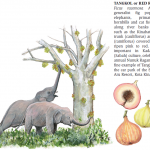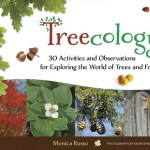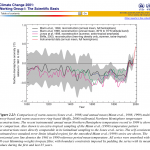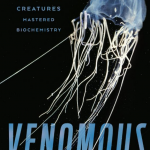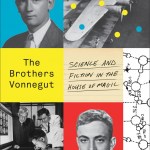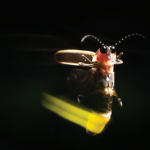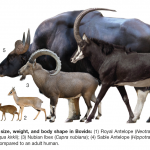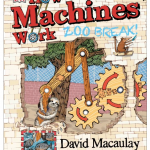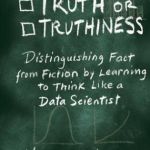book review
How do you judge a field guide?
Phillipps' Field Guide to the Mammals of Borneo and Their Ecology: Sabah, Sarawak, Brunei, and KalimantanSome field guides you leave on the shelf and rarely look at. Others you may put in the living room to spice up the coffee table, because they make great eye candy, but are otherwise not that useful. Others you take out, and at least have around in case you need them. Others you make sure you are never very far away from because you find yourself looking for them all the time.
And, every once in a while, a field guide comes along that you want to take to…
Wildlife of Southeast Asia by Susan Myers, is a new pocket identification guide covering "wildlife" in Burma, Thailand, Laos, Cambodia, Vietnam, West Malaysia, and Singapore.
It covers birds, mammals, reptiles, frogs, and invertebrates. Considering that there must be tens of millions of inverts in Southeast Asia, the coverage here is very minimal, just the highlights, just a few pages. This is mainly a bird book, with pretty good coverage of mammals, a bunch of snakes, some of the more important frogs, and some of the more obvious insects, etc.
It is standard field guide size, and uses…
Treecology: 30 Activities and Observations for Exploring the World of Trees and Forests is an excellent new nature activity book for kids of a fairly wide range of ages.
Like a tree, the pattern of the book is pretty straightforward but fractal like; you start off simple but end up pretty much anywhere in the world of ecology. The book begins with the basic definition of a tree, simple tree anatomy, some phylogeny, some tree physiology and biology, but then branches off (pun intended) into things that are related to trees, like things that live on them, eat parts of them, etc. Seeds and…
Michael Mann has a specialty or two. Climate simulation modeling, analysis of proxy data, the study of global teleconnections, Northern Hemisphere surface temperatures over historic time scales, etc. A while back, Mann's research interests and activities converged, I assume by some combination of design and chance (as is often the case in Academia) with a key central question in science. This question is, "What is the pattern of surface warming caused by human effects on the atmosphere, including changes in greenhouse gas concentration and other pollutants?"
Mann and his colleagues…
You can read this book review, or you can just go HERE and listen to our interview with author Christie Wilcox. I promise you in advance that you will want to read her book!
But, if you want to read the book review, here it is...
Did you ever do anything that hurt, then you had to do it again and you knew it would still hurt, and you didn't like that? Like getting your teeth cleaned, or licking a nine volt battery. OK, maybe you didn't have to lick the nine volt battery, but you get my point.
When I was working in the Ituri Forest, in the Congo, taking a walk in the forest was one of…
Huxley and I like to make Arduino projects. If you know what that means, your geek cred is good. If not, I'll explain briefly.
Arduino is an Italian based project that produces circuit boards that are controllers.
A controller is a small highly specialized computer thingie that can be programmed to have various inputs and outputs. You can connect devices (sensors) to the inputs and other devices (actuators of some kind, or lights or whatever) to the outputs. The programming can be fairly sophisticated. If you hook up enough of the right stuff to an Arduino board (of which there are…
Manga is the Japanese sounding but not used so much in Japan term for a form of cartooning art that has its roots from before World War II but that emerged in its common form during the post war Occupation period. Early used in political cartooning, Manga style drawing is now used for a wide range of expression, and has a place in illustrating a wide range of products, read by Japanese citizens of all sorts and ages. Outside of Japan, Manga is the starting point for the wildly popular Anime style of expression, which of course brings us to...
Pokeman go
But, we are not here to talk about…
"And yet many people today believe that weather modification is a hoax: the early overselling of rainmaking somehow caused it, down the line, to be grouped in the public mind with conspiracy theories about mind-altering 'chemtrails,' shock-jock speculation that the government manufactures tornadoes, and paranoid fantasies about the 'weather wars' involving earthquakes broadcast via the stratosphere. The reality is far less dramatic." -Ginger Strand, The Brothers Vonnegut
In 1945, after the United States dropped atomic bombs on Hiroshima and Nagasaki, there was much hand-wringing in the…
I want to tell you about a great new book that has one forgivable flaw, which I’ll mention at the end. But first, a word from Bizarro Land. This is about the Grand Canyon.
I would think that the Grand Canyon would be the last thing that creationists would point to as proof of a young earth (several thousands of years old). Just go look at the Grand Canyon. One of the top major layers, the Kaibab Formation, is around 300 to 400 feet thick and made mostly of limestone. That would take a long time to form. But wait, there's more. Within the Kaibab limestone there are also different sorts of…
Silent Sparks: The Wondrous World of Fireflies is about fireflies.
How do they light up? Why do they light up?
It is axiomatic in nature that flashy displays are related to mating. Among the flashy displays various animals have come up with, a few actually flash, and among those, the flashing of the firefly is probably the most well known. And, yes, it is a mating strategy.
There are almost 2,000 species of fireflies and they live around the world. Not all flash, but they are phylogenetically related to those that do so we use the vernacular term "firefly" to refer to all of them. (The…
According to the Encyclopedia Britannica, there are 143 species of bovids. The Animal Diversity Web is a bit less precise, indicating that there are "more than 140 extant and 300 extinct species." That second number is highly questionable because today there exist sister species that are so similar I doubt they could be told apart from fossils alone. If you check around the internet, this ~140 number comes up again and again, and Wikipedia says 143.
Research published in 2011 and later by Colin Groves, Peter Grubb, and David Leslie, which has been tagged as controversial by some but…
Photographer Jesse Cancelmo was struck by the general lack of understanding of the sea life and ecology of the Gulf of Mexico that became apparent with the big oil spill in 2010, and this inspired him to carry out a major photographic project in the Gulf.
He felt many had written off the Gulf as a post-environmental disaster dead zone. While environmental effects in the Gulf are certainly very important, it is still a living, thriving ecosystem, the product of Candelmo's work, Glorious Gulf of Mexico: Life Below the Blue, attests to this.
This is a stunning coffee table type book (but…
Rall, Ted. Snowden. New York: Random House, 2015. 224pp. ISBN-13: 978-1609806354
For those that have watched Citizenfour or read Glenn Greenwald's No place to hide: Edward Snowden, the NSA, and the U.S. surveillance state, there's not much new or shocking in Ted Rall's excellent graphic novel, Snowden.
But for someone who hasn't had a chance to check out either or those works, this is a fantastic place to start a deeper exploration into the amazing story around Edward Snowden, one of the major figures in the current debate about the way governments try to control and monitor the Internet. It…
David Macaulay is famous for his "how things work" books. How Machines Work: Zoo Break! is a new book that is really fun. So fun that it took me a long time to get it back from Amanda and Huxley so I could review it.
The concept is simple. A story, a simple story, is constructed, that has nothing to do with machines. Except it has everything to do with machines. Two critters, Sloth and Sengi, are in a zoo and trying to escape. Their various escapades lead to situations that allow the exploration of all those interesting mechanical concepts, such as inclined planes, levers and fulcrums and…
Donald R. Prothero's The Story of Life in 25 Fossils: Tales of Intrepid Fossil Hunters and the Wonders of Evolution has a bit of something for everyone. It's a great introduction to the history of life on the planet Earth, it's a solid primer on why evolution is true. It's a fun read with lots of tales of paleontological adventure and derring do. One of my favourite parts is the list of "must visit" natural history museums both in the US and around the world (I've been to seven of them, but I hope to visit more of them!). Tips on where you can actually see the fossils under discussion for…
The book is: Dark Money: The Hidden History of the Billionaires Behind the Rise of the Radical Right.
Also by the same author: The Dark Side: The Inside Story of How the War on Terror Turned Into a War on American Ideals.
Here is my version of recent American political history:
Everyone in America knows that if you want to identify the people or corporations, and the motivations, behind politics, you follow the money. Americans have historically differed in the degree to which they formulate this concept in their own minds as conspiratorial end-times ranting or shrug it off as just the way…
Truth or Truthiness: Distinguishing Fact from Fiction by Learning to Think Like a Data Scientist is a new book by Howard Wainer that can serve as a manual for how to be a good skeptic.
Wainer is a statistician, formerly with the famous Educational Testing Service, and a professor at the Wharton School of the University of Pennsylvania. He is well known for his work in statistics and data presentation.
You know what "truthiness" is. It is a term coined by Stephen Colbert in 2005 to refer to assertions that are clearly true because of how they look, feel, smell, but that are in fact, not…
Kristin Briney's Data Management for Researchers: Organize, maintain and share your data for research success is a book that should be on the shelf (physical or virtual) of every librarian, researcher and research administrator. Scientists, engineers, social scientists, humanists -- anyone who's work involves generating and keeping track of digital data. This is the book for you.
Like the title says -- data management for researchers. If you have data and you're a researcher, this is the book for you. Organize, maintain and share, the title says. If you're a researcher that needs to manage…
John Horton Conway is a great mathematician, certainly one of the greatest living mathematicians. Polymathematical in his mathematical interests (game theory, geometry, group theory, topology and more, not to mention the Game of Life), he's also one of the most eccentric, and that's saying a lot in a field where Cedric Villani is prime eccentricity competition.
As one can imagine, the biographer of an oddball character like Conway faces certain ... challenges ... that most biographers don't face. Memory, obstinacy, whimsy, the whole nine yards.
So it pleases me to say that Siobhan Roberts'…
This is the first popup book I've ever reviewed and I certainly hope it won't be the last.
David Macaulay's How Machines Work: Zoo Break! is a wonderful, whimsical, delightful and beautiful book that will charm and fascinate anyone who picks it up.
Aimed at younger children and told through the eyes of two zoo animals named Sloth and Sengi, it takes a pretty solid engineering approach to the world. It focuses on the core principles of how machines work and cleverly uses a popup devices on many pages to illustrate and even demonstrate those principles. Leverage and levers, wheels and pulleys…
